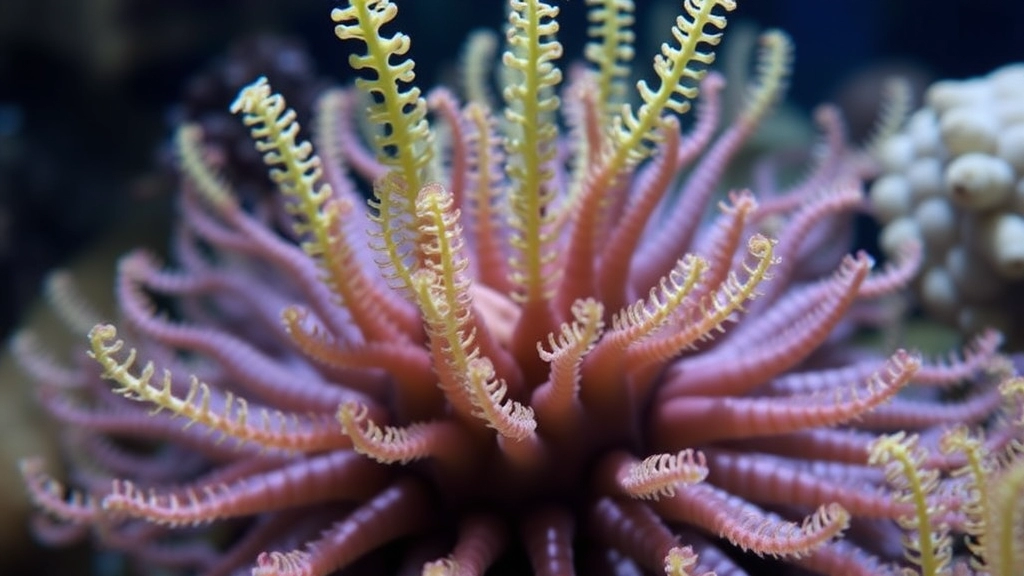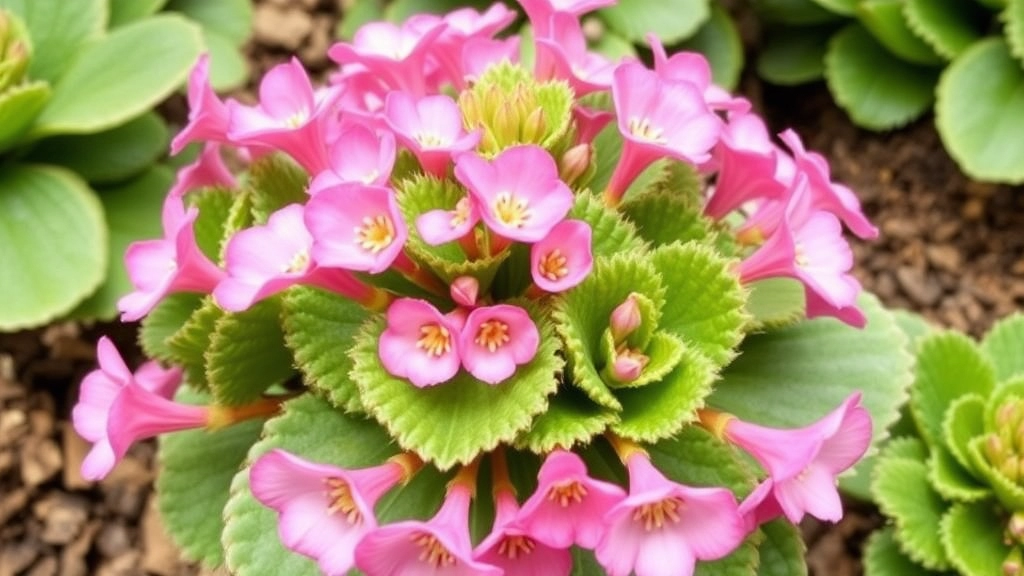Learn About Kalanchoe Tubiflora
Looking to learn more about Kalanchoe Tubiflora, also known as Mother of Millions? This succulent is famous for its rapid production of plantlets, making it a fascinating yet potentially invasive addition to your garden. In this guide, I’ll share essential care tips to help you grow and manage this unique plant effectively.
From controlling its invasive nature to mastering propagation techniques, you’ll find everything you need to keep your Kalanchoe Tubiflora thriving. Plus, I’ll cover how to handle common issues like pests, diseases, and overwatering, and discuss its toxicity to ensure safety around pets and children.
Essential Care Tips for Kalanchoe Tubiflora (Mother of Millions)
Are you struggling to keep your Kalanchoe Tubiflora, commonly known as Mother of Millions, thriving in your home?
You’re not alone. Many plant enthusiasts face challenges with this unique succulent, which is known for its beautiful, cascading plantlets.
Light Requirements
- Bright, Indirect Light: Place your Mother of Millions in a spot where it can receive bright, indirect sunlight.
- Avoid Direct Sun: Too much direct sunlight can scorch the leaves, so find a balance.
Watering Guidelines
- Infrequent Watering: Allow the soil to dry out completely between waterings.
- Check Soil Moisture: Use your finger to gauge moisture levelsâif it feels dry an inch down, it’s time to water.
- Seasonal Adjustments: In winter, reduce watering frequency even further, as the plant enters dormancy.
Soil and Potting
- Well-Draining Soil: Use a cactus or succulent mix to ensure proper drainage.
- Pot Selection: Choose a pot with drainage holes to prevent water accumulation.
Temperature and Humidity
- Ideal Temperature: Keep your Kalanchoe in a warm environment, ideally between 18°C to 24°C.
- Humidity Levels: This plant prefers lower humidity, making it perfect for indoor settings.
Fertilizing
- Light Feeding: Fertilize with a balanced, diluted fertiliser during the growing season (spring and summer).
- Frequency: Once a month should suffice.
For more detailed information, check out our complete guide on caring for and propagating Kalanchoe Mother of Millions. If you’re interested in other Kalanchoe varieties, you might find our guide on Kalanchoe Pinnata helpful.
How to Control the Invasive Growth of Mother of Millions

So, you’ve got a Kalanchoe Tubiflora, and it’s thriving—maybe a bit too much.
You’re not alone if you’re wondering how to rein in its invasive growth.
This plant is known for its ability to produce countless plantlets, which can quickly turn your garden or home into a jungle.
Here are some straightforward tips to keep it in check:
1. Regular Pruning
- Trim back the stems: Snip off any long or leggy stems to encourage bushier growth.
- Remove plantlets: Regularly pluck off the tiny plantlets before they take root.
2. Control Watering
- Water less frequently: Overwatering can lead to faster growth. Allow the soil to dry out between waterings.
- Use well-draining soil: This helps prevent excess moisture, slowing down the plant’s growth.
3. Container Planting
- Choose a pot: If you’re growing it indoors, use a container to limit its spread.
- Use a root barrier: If planting outdoors, consider placing a barrier in the soil to restrict root growth.
4. Dispose of Excess Plantlets
- Don’t toss them in the compost: This can lead to new plants sprouting. Instead, dispose of them in the rubbish.
- Share with friends: If you’re feeling generous, give some plantlets to friends who want to try their hand at growing them.
5. Monitor and Control
- Keep an eye out: Regularly check for any new growth and remove it promptly.
- Set reminders: Schedule monthly checks to keep it in check.
Propagation Methods: Maximizing the Growth of Plantlets
When it comes to expanding your collection of Kalanchoe Tubiflora, understanding effective propagation methods is key. This succulent is known for its ability to produce numerous plantlets, making it a favourite among gardeners. However, many may wonder how to best harness this prolific growth.
Propagation Techniques
Here are some straightforward methods to propagate Kalanchoe Tubiflora and ensure a thriving new generation of plantlets:
- Leaf Cuttings:
- Select a healthy leaf from the parent plant.
- Allow the cut end to dry for a few hours to form a callus.
- Place the leaf in well-draining soil and lightly mist it.
- Keep it in indirect sunlight and maintain a humid environment until roots develop.
- Offsets:
- Look for small plantlets that form at the base of the parent plant.
- Gently twist or cut these offsets away.
- Replant them in a suitable potting mix, ensuring they are well-watered initially.
- Seed Propagation:
- Although less common, seeds can be collected from mature flowers.
- Sow seeds on the surface of a moist seed-starting mix.
- Cover lightly and maintain a warm, humid environment until germination occurs.
Tips for Success
To maximise the growth of your plantlets, consider the following:
- Light Requirements:
Ensure your cuttings receive bright, indirect sunlight. For more detailed information, check out our Chandelier Plant Kalanchoe Tubiflora Care Guide.
- Watering:
Avoid overwatering; let the soil dry out between waterings to prevent rot. For additional tips, visit our Why Are My Kalanchoe Leaves Drying Out: Causes and Fixes guide.
- Temperature:
Keep the environment warm, ideally between 20°C to 25°C.
By applying these methods, you can easily propagate Kalanchoe Tubiflora and enjoy a flourishing collection of plantlets.
Managing Common Issues: Pests, Diseases, and Overwatering

As we delve deeper into caring for Kalanchoe Tubiflora, it’s essential to address the common issues that can arise with this beautiful plant.
Pests
Are you noticing small bugs on your Mother of Millions?
Pests can be a significant concern for Kalanchoe Tubiflora. Common culprits include:
- Mealybugs: These pests appear as white, cottony masses on leaves and stems.
- Aphids: Small, green insects that cluster on new growth.
- Spider Mites: Tiny, spider-like pests that thrive in dry conditions.
Control Methods:
- Isolation: If you spot pests, isolate the affected plant immediately.
- Insecticidal Soap: Apply this solution to affected areas to eliminate pests.
- Neem Oil: A natural remedy that disrupts pest life cycles.
Diseases
Kalanchoe Tubiflora is generally resilient, but diseases can still occur.
Common Diseases:
- Root Rot: Caused by overwatering, leading to mushy roots.
- Leaf Spot: Dark spots on leaves, often due to fungal infections.
Prevention and Treatment:
- Well-Draining Soil: Ensure your potting mix allows for proper drainage.
- Watering Practices: Allow the soil to dry out between waterings to prevent root rot.
Overwatering
Are your leaves turning yellow or dropping?
Overwatering is one of the most common issues faced by Kalanchoe Tubiflora enthusiasts.
Signs of Overwatering:
- Yellowing leaves
- Wilting despite wet soil
- Root rot
Solutions:
- Check the Soil: Always check the top inch of soil before watering.
- Use Drainage Holes: Ensure your pot has adequate drainage to prevent water accumulation.
- Adjust Watering Schedule: Water less frequently during winter months when the plant is dormant.
When considering the beauty of Kalanchoe Tubiflora, or Mother of Millions, many plant enthusiasts often overlook a crucial aspect: its toxicity.
**Understanding the Toxicity**
Kalanchoe Tubiflora contains compounds that can be harmful to pets, particularly cats and dogs. The primary concern is its cardiac glycosides, which can lead to serious health issues if ingested.
**Common Symptoms of Toxicity:**
– Vomiting
– Diarrhoea
– Lethargy
– Heart arrhythmias
If you suspect your pet has ingested any part of the plant, it is vital to consult a veterinarian immediately.
**Keeping Your Pets Safe**
To ensure your furry friends remain safe while you enjoy your Kalanchoe Tubiflora, consider the following strategies:
– **Placement:** Keep the plant out of reach, preferably on high shelves or in hanging baskets.
– **Alternative Plants:** If you have pets that are prone to nibbling on plants, consider non-toxic alternatives to Kalanchoe, such as spider plants or Boston ferns.
– **Education:** Educate family members, especially children, about the dangers of the plant and the importance of keeping it away from pets.
– **Monitoring:** Regularly check your plants to ensure they are not damaged or overly accessible.
For more detailed care tips, you might find our [complete care guide for Kalanchoe Tubiflora](https://planthq.org/complete-care-guide-for-kalanchoe-tubiflora-mother-of-millions/) useful. Additionally, if you’re interested in other types of Kalanchoe, our [guide on different types of Kalanchoe Daigremontiana](https://planthq.org/different-types-of-kalanchoe-daigremontiana-explained/) provides valuable insights.
FAQs about Kalanchoe Tubiflora (Mother of Millions)
What is Kalanchoe Tubiflora?
Kalanchoe Tubiflora, also known as Mother of Millions, is a succulent plant known for its ability to produce numerous plantlets that can quickly propagate and spread.
How can I control the invasive growth of Mother of Millions?
To control its invasive growth, you can regularly prune the plant, control watering, use container planting, dispose of excess plantlets properly, and monitor new growth consistently.
What are the common pests that affect Kalanchoe Tubiflora?
Common pests include mealybugs, aphids, and spider mites. These pests can be controlled through isolation, insecticidal soap, or neem oil.
What diseases commonly affect Kalanchoe Tubiflora?
Common diseases include root rot and leaf spot. These can be prevented and treated by ensuring well-draining soil and proper watering practices.
How do I know if I am overwatering my Kalanchoe Tubiflora?
Signs of overwatering include yellowing leaves, wilting despite wet soil, and root rot. To prevent overwatering, check the soil before watering, ensure pots have drainage holes, and adjust your watering schedule, especially during winter months.
Can I grow Kalanchoe Tubiflora indoors?
Yes, you can grow Kalanchoe Tubiflora indoors. Using a container can help limit its spread and make it easier to manage.
How should I dispose of excess plantlets?
Do not toss excess plantlets in the compost as they can sprout new plants. Instead, dispose of them in the rubbish or share them with friends who might be interested in growing them.
What is the best soil type for Kalanchoe Tubiflora?
Well-draining soil is best for Kalanchoe Tubiflora. This helps prevent excess moisture and reduces the risk of root rot.
How often should I water my Kalanchoe Tubiflora?
Allow the soil to dry out between waterings. Overwatering can lead to faster growth and potential root rot. Adjust your watering schedule based on the season, watering less frequently during the winter months.
What should I do if I notice pests on my plant?
If you notice pests, isolate the affected plant immediately and treat it with insecticidal soap or neem oil to eliminate the pests.
References
-
How to Control the Invasive Growth of Mother of Thousands
-
Growing and Controlling Mother of Thousands Plants
-
Managing Mother of Thousands: Tips and Tricks
